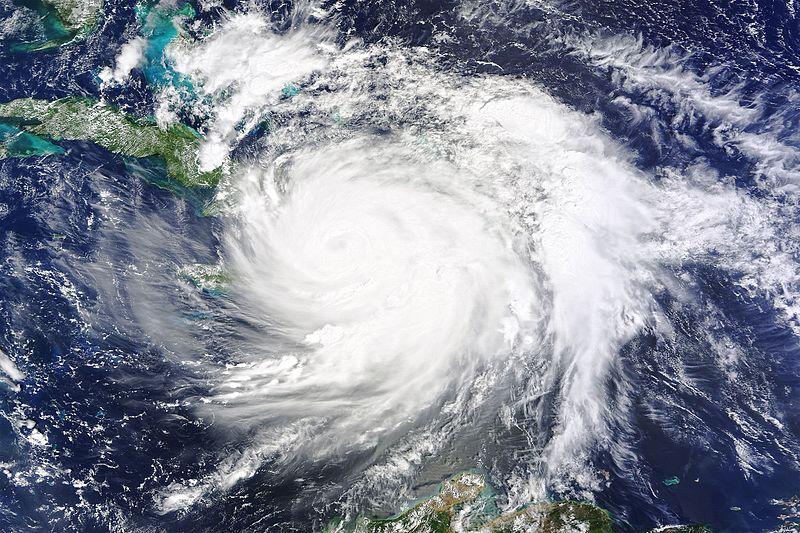Hurricane Matthew, One Long Path of Destruction
On October 3, a hurricane warning was issued for the northwest Bahamas while Hurricane Matthew, a category four hurricane, continued its march up the Caribbean. A hurricane is a natural disaster consisting of violent wind and rains that normally occurs in tropical areas. A category four hurricane is the second-highest hurricane classification, storms of this intensity maintain maximum sustained winds of 130-156 miles-per-hour. The Jetstream Journal’s hearts go out to those affected by Hurricane Matthew, which has now been downgraded to a post-tropical storm.
The morning of October 4, Hurricane Matthew reached Les Anglais, Haiti at 7 am local time. Within just a few hours, Haiti was slammed with winds reaching speeds of 145 miles-per-hour and threatening rains of up to 40 inches. While it is hard to determine just how bad the wreckage is due to the destruction, Haiti’s death toll is over 800 and rises by the hour. Matthew tore through Haiti, leaving a trail of destroyed homes and massive flooding in its path. During the hurricane, Joseph Guyler Delva, a Haitian journalist, reported that the assistant mayor of Les Cayes was holding a meeting on how to handle the storm when the roof was blown completely off. As of now, several people are missing, 211 people are injured, and over 60,000 people are displaced due to the storm.

Photo via google under Labeled for Reuse.
https://c2.staticflickr.com
The night of October 4, the eastern tip of Cuba and the Bahamas began to feel the full power of Hurricane Matthew. Some 316,000 people have been evacuated from the city of Guantanamo where citizens were urged to protect their windows with adhesive tape and cardboard, block their doors with iron rods, and reinforce tin roofs with sandbags. As the storm crossed the island, it exceeded winds of 140 miles-per-hour. However, unlike Haiti, Cuba’s internationally recognized prevention and alert system showed an exemplary level of preparation and allowed for the safety of thousands of citizens. Many Cubans have said that they felt safe and can evacuate if needed whenever they want. Throughout the storm, roadways were blocked and dozens of houses were washed away but no fatalities have been reported as much of the area was safely evacuated.
Governors in Florida, Georgia, North Carolina, and South Carolina have all declared a state of emergency as Matthew neared the Southeastern tip of Florida. President Barack Obama signed disaster declarations for Florida and Georgia while the death toll rose to nineteen in the four states. More than 2 million households and businesses were without power, mostly in Florida and South Carolina. The storm has posed a major threat of flooding, rain totals reached a maximum of sixteen inches with several roads being washed out. More than 1,000 people were rescued from their homes during the storm, and 3,000 more were placed in shelters. The governor of North Carolina said, “Hurricane Matthew is off the map, but it’s still with us, and it’s still deadly. It’s going to be with us for a long time.” The National Hurricane Center sent out an advisory stating that life-threatening flooding would continue in North Carolina and that the Mid-Atlantic coast would see high water levels and storm surges.
Coloradans have not experienced a hurricane since 2004, and even then there was no real damage done. So how can we help? To start, if you have friends or family that live on the east coast, call and ask where they are located and if they are ok. Carter Rodny, an Air Academy student, has family in Florida and said “I have already called and asked if they were ok. They told me they were prepared for the storm and will evacuate if needed.” If you would like to help in other ways, the Center for International Disaster Information has compiled a list of charities that are sending help at cidi.org/. You can also consider volunteering, the Red Cross has put out a call for volunteers to help affected areas in the Carolinas, Georgia, and Florida.

Oh hey! My name is Cole P., and I am a junior at Air Academy. I work hard and have a passion for writing. Also, I am considered a bit of a legend around...














Ben Newton • Oct 19, 2016 at 1:38 pm
Cole I loved your post about Hurricane Matthew, absolutely incredible.
Carter Rodny • Oct 18, 2016 at 12:12 pm
I was not aware that a hurricane has hit Colorado before. Great article!
Jake Werner • Oct 18, 2016 at 12:05 pm
Great Article. It really stinks to hear about what is happening to Haiti and the problems that they are having with the hurricane.
Calvin Yocum • Oct 18, 2016 at 11:56 am
Wow! So sad that the hurricane is devastating the entire southeast of America. Great Article!